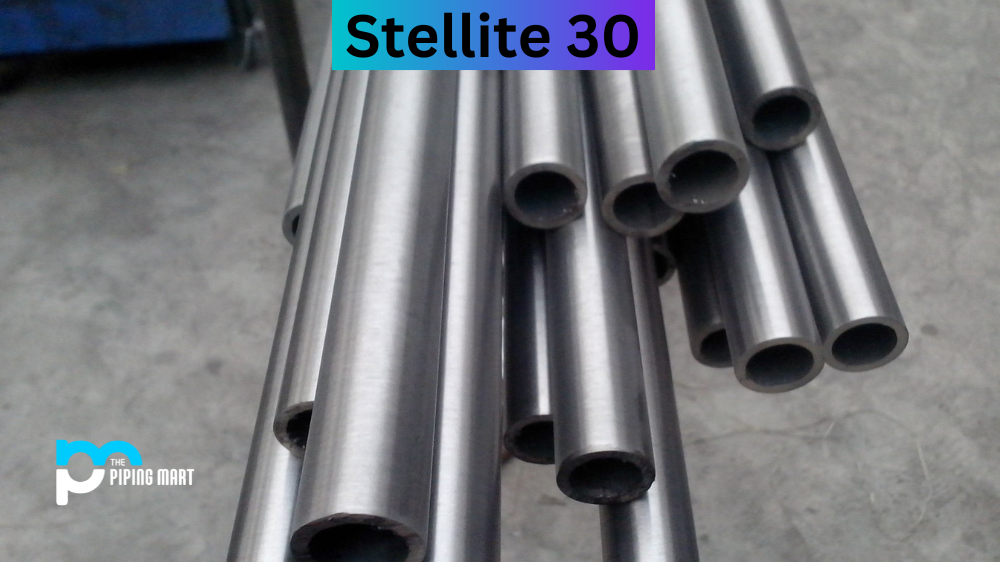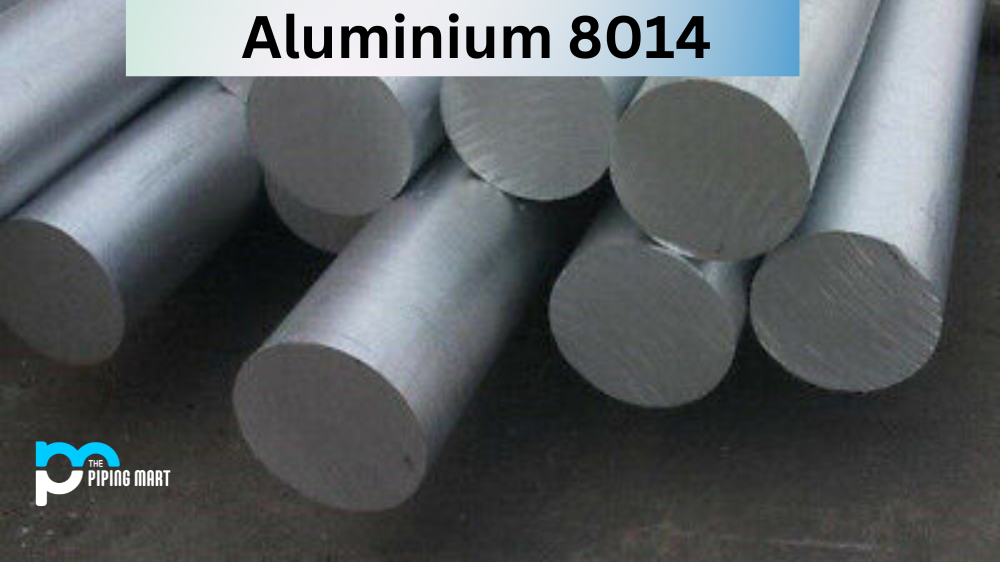Stellite 30 is a unique and versatile material that has entered many industries. It is a complex, corrosion-resistant alloy widely used in applications requiring high wear resistance. Stellite 30 is a combination of cobalt, chromium, and tungsten, along with small amounts of other elements. This blog post will explore the composition, physical and mechanical properties, uses, hardness, heat treatment, welding, and corrosion resistance of Stellite 30.
Stellite 30 Composition
Stellite 30 is a cobalt-based alloy typically containing 30-33% cobalt, 27-29% chromium, and 12-14% tungsten. Other elements that may be present in smaller amounts include carbon, silicon, iron, nickel, manganese, and molybdenum. The precise composition of Stellite 30 can vary depending on the application and the manufacturing process used.
| Element | Amount |
|---|---|
| Chromium (Cr) | 26% |
| Nickel (Ni) | 15% |
| Cobalt (Co) | 50.0% |
| Molybdenum (Mo) | 6% |
| Iron (Fe) | 2% |
| Carbon (C) | 0.5% |
Stellite 30 Physical Properties
Stellite 30 has a density of approximately 8.4 g/cm³ and a melting point of around 1300°C. It is a hard and brittle material resistant to corrosion and oxidation. Stellite 30 is also non-magnetic and has good thermal conductivity. It is often used in high-temperature applications where other materials would fail due to thermal expansion.
Stellite 30 Mechanical Properties
Stellite 30 is a high-strength material with a tensile strength of around 1200 MPa. It also has a high yield strength of approximately 800 MPa. Stellite 30 is extremely wear-resistant, with a hardness of around 50 HRC. It is commonly used in valve seats, bearing inserts, and hot extrusion dies.
Stellite 30 Uses
Stellite 30 is used in various industries, including aerospace, automotive, chemical processing, and oil and gas. It is often used in high-wear applications such as pump components, valve stems, gas turbine blades, and shredder blades. Stellite 30 is also used to produce cemented carbides and other hard materials.
Stellite 30 Hardness
Stellite 30 has a hardness of around 50 HRC, making it an extremely hard material. It is also highly wear-resistant, which makes it ideal for use in applications that require high wear resistance. The hardness of Stellite 30 can be increased by heat treatment, which we will discuss in the next section.
Stellite 30 Heat Treatment
Stellite 30 can be heat-treated to improve its mechanical properties. The heat treatment involves heating the material to a specific temperature and then cooling it rapidly. This process can increase the hardness and strength of the material and improve its wear resistance. However, heat treatment can also make the material slightly more brittle, so it must be used carefully.
Stellite 30 Welding
Stellite 30 can be welded using conventional welding techniques such as TIG welding or plasma arc welding. However, the welding process must be carefully controlled to avoid cracking or other defects. Stellite 30 is also often used in hard-facing applications, where a layer of Stellite 30 is applied to the surface of a less wear-resistant material to improve its wear resistance.
Stellite 30 Corrosion Resistance
Stellite 30 is highly resistant to corrosion and oxidation. It is often used in applications where exposure to harsh chemicals or extreme temperatures would cause other materials to corrode or degrade. Stellite 30 is also resistant to pitting and crevice corrosion, making it ideal for marine use.
Conclusion:
Stellite 30 is a unique and versatile material with many applications. Its high wear resistance, corrosion resistance, and strength make it ideal for use in demanding environments. By understanding the composition, physical and mechanical properties, uses, hardness, heat treatment, welding, and corrosion resistance of Stellite 30, engineers and manufacturers can make informed decisions about how to use this material effectively.

Meet Bhavesh, a seasoned blogger with a wealth of knowledge and experience. From metal products manufacturing to retail, Bhavesh has a diverse background in various industries and is dedicated to sharing his insights and expertise with readers.




